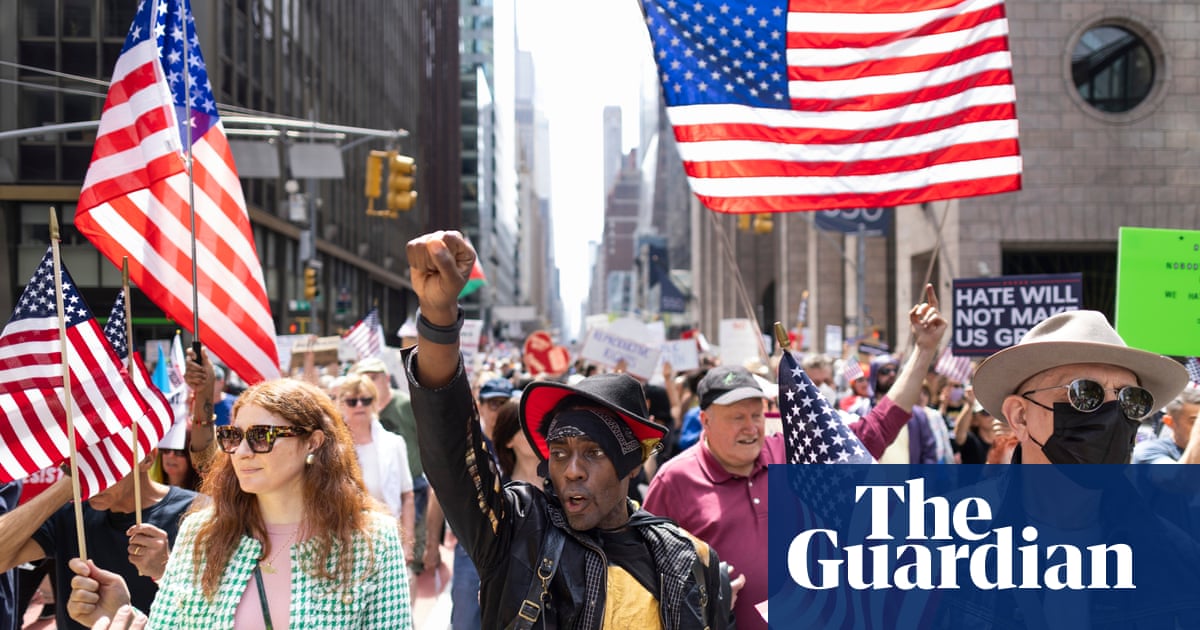Protesters poured into the streets of cities and towns across the United States again on Saturday, in the second wave of protests this month, as organizers seek to turn discontent with Donald Trump’s presidency into a mass movement that will eventually translate into action at the ballot box.
By early afternoon, large protests were under way in Washington, New York and Chicago, with images of crowds cascading across social networks showing additional demonstrations in Rhode Island, Maryland, Wisconsin, Tennessee, South Carolina, Ohio, Kentucky, California and Pennsylvania, among others. Americans abroad also signaled their opposition to the Trump agenda in Dublin, Ireland, and other cities.
More than 400 rallies were planned, most loosely organized by the group 50501, which stands for 50 protests in 50 states, one movement.
Opponents of Donald Trump’s administration mobilized from the east coast to the west, including at rallies in Portland, Maine, and Portland, Oregon, decrying what they see as threats to the nation’s democratic ideals.
The events ranged from a massive march through midtown Manhattan to a rally in front of the White House and a demonstration at a Massachusetts commemoration marking the start of the American revolutionary war 250 years ago.
In Massachusetts, 80-year-old retired mason Thomas Bassford told CBS News that he believed US citizens were under attack from their own government, saying: “This is a very perilous time in America for liberty. Sometimes we have to fight for freedom.”
Protesters identified a variety of concerns, each unified under a common theme: opposition to the second Trump presidency.
“We are losing our country,” demonstrator Sara Harvey told the New York Times in Jacksonville, Florida. “I’m worried for my grandchildren,” she said. “I do it for them.”
It is the fourth protest event to be staged by the group since Trump was inaugurated on 20 January. Previous events included a “No Kings Day” on President’s Day, 17 February, a theme adopted before Trump referred to himself as a king in a social media post days later.
after newsletter promotion
Organizers have called for 11 million people to participate in the latest rallies, representing 3.5% of the US population.
Such a figure would likely the surpass the numbers who took part in the “Hands Off” rallies staged on 5 April, when 1,200 demonstrations were staged across the US to register opposition to Trump’s assault on government agencies and institutions, spearheaded by the president’s chief lieutenant, the tech billionaire Elon Musk and his unofficial “department of government efficiency” (Doge) unit.
Indivisible, the progressive movement behind the “Hands Off” events, said it was it was seeking to send a message to opposition politicians and ordinary voters that vocal resistance to Trump’s policies was essential. It also said it was seeking to build momentum that would lead to further and larger protests.
Heather Dunn, a spokesperson for 50501, said the goal of Saturday’s protests was “to protect our democracy against the rise of authoritarianism under the Trump administration”.
She called the group a “pro-democracy, pro-constitution, anti-executive overreach, nonviolent grassroots movement” that was nonpartisan.
“We have registered Democrats, registered independents and registered Republicans all marching because they all believe in America, because they all believe in a fair government that puts people before profits,” she told the Washington Post.
Academics who have tracked the slide of democracy into authoritarianism say protests can be part of a wider of strategy to reverse the trend.
“Oppositions to authoritarian governments have to use multiple channels always,” said Steven Levitsky, a political scientist at Harvard University and co-author, with Daniel Ziblatt, of How Democracies Die. “They have to use the courts where those are available. They have to use the ballot box when that’s available, and they have to use the streets when necessary – that can shape media framing and media discourse, which is very, very important.”
In Washington DC on Saturday, a protest planned by the 50501 movement is scheduled to take place in Franklin Park, and a march will start near the George Washington monument and head towards the White House in support of Kilmar Ábrego García, a Salvadorian man with US protected status wrongly deported to El Salvador from Maryland.



